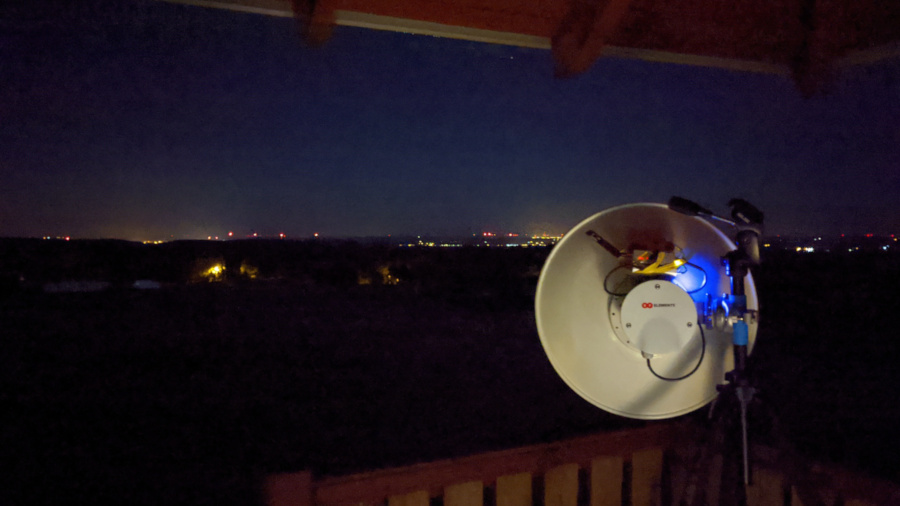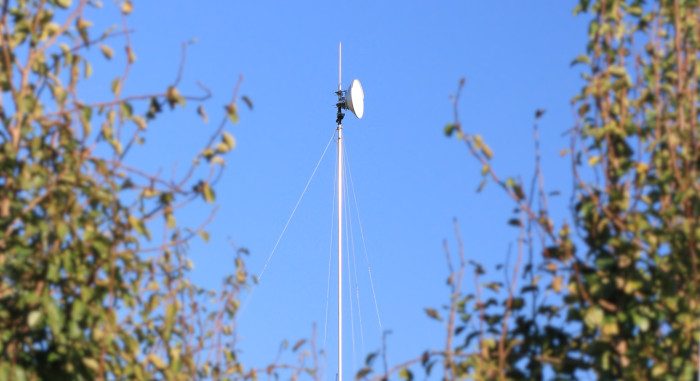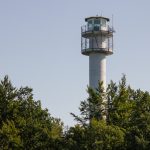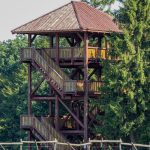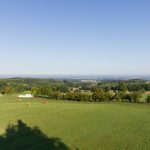5 GHz Wi-Fi DX record – Denmark logged in Poland @ 745 km
A remarkable tropospheric ducting occurred on August 11 and 12, 2020 between Poland, Sweden and Denmark. The propagation forecasts, which use color hue to scale their intensity, featured red shades over the Baltic Sea. Such a propagation strength is very rare, if ever seen on a forecast for this area. I was looking forward for something extraordinary, especially on the microwave bands. My stationary Wi-Fi DXing setup has been damaged three months ago. I could not miss such an opening, so a DX-pedition was the only option. In the evening of August 11 I made an opportunistic decision to visit the Dylewska Góra in north-eastern Poland. A few hours later, I was standing there with an antenna inside a lookout tower.
With its tip at 312 m ASL, Dylewska Góra (Dylewska Mountain) near Ostróda is the highest hill of the whole north-eastern Poland. There is a wooden lookout tower atop which provides fantastic unobstructed views between 175° to 340° azimuth with optical visibility up to around 50 km. The driving distance from my location is 135 km and I arrived there in two hours, in the middle of the night (2 AM). I knew that place as I have visited it already once with my friend. Back then in the 2018 we encountered a typical morning inversion without any notable long-range ducting (see the report: Early morning on Dylewska Góra).

